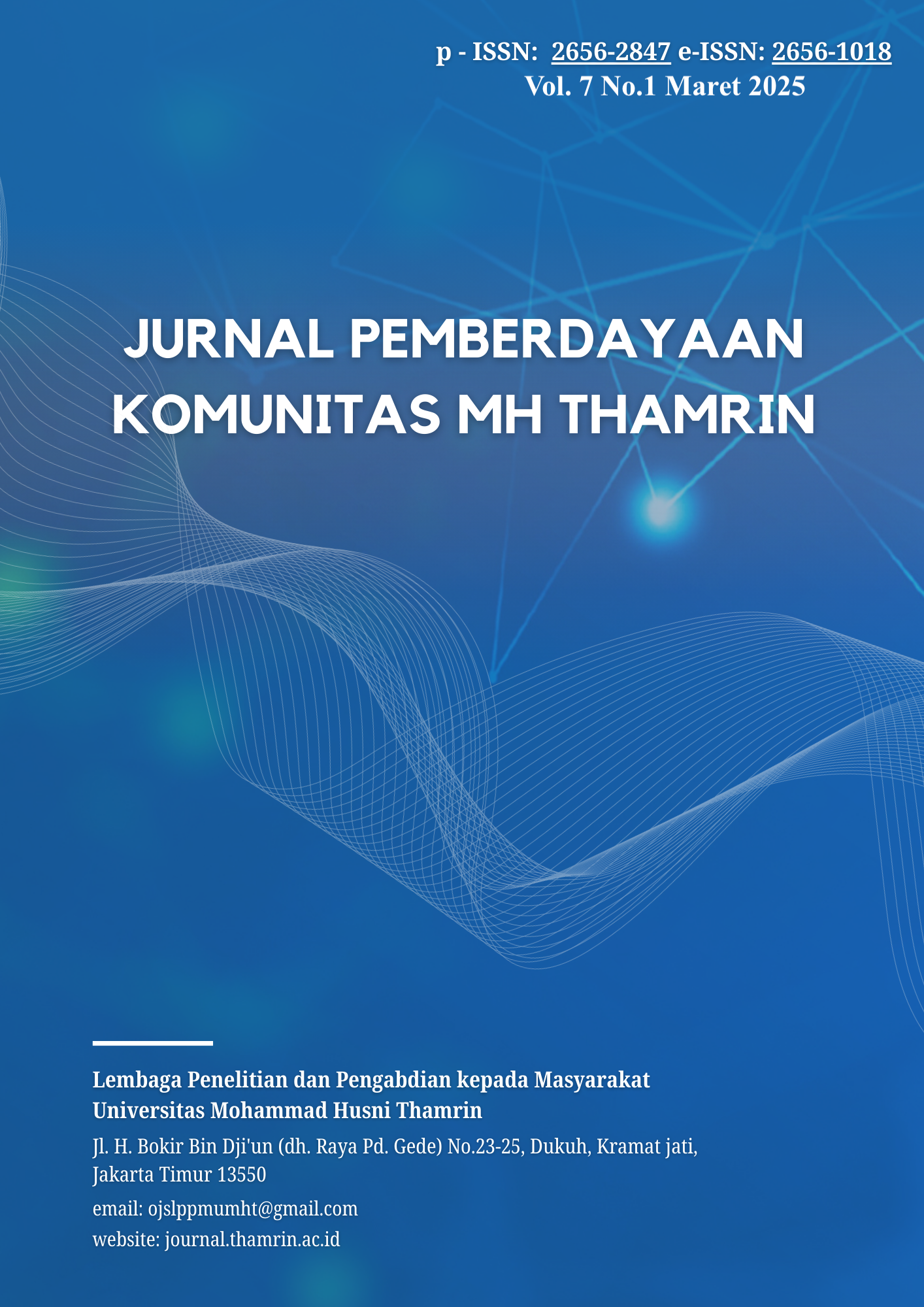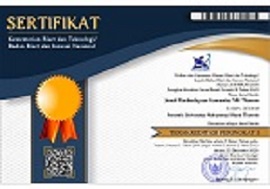Family Medicinal Plant Education Program for Students at the Kramat Jati Village Preschool Unit
DOI:
https://doi.org/10.37012/jpkmht.v7i1.2621Abstract
This Community Service activity was carried out in 9 PAUD units located in Kramat Jati Village, East Jakarta. The main problem of the partners is that family medicinal plants (TOGA) have not been utilized as a source of learning for early childhood. In fact, during the COVID-19 pandemic, people are accustomed to consuming herbal drinks made from medicinal plants that are easily obtained and safe for consumption. Through collaboration with the KPKP Sub-dept. of Kramat Jati District, the management of HIMPAUDI Kramat Jati branch, and the principals of 9 PAUDs, the TOGA education program was implemented to introduce children to types of medicinal plants, planting techniques, decorating plant containers, and making and consuming simple herbal drinks. This activity aims to foster children's love and interest in medicinal plants and encourage the cultivation of TOGA in the school environment as a source of sustainable learning. The socialization and planting activities of Family Medicinal Plants (TOGA) at PAUD in Kramat Jati Village succeeded in increasing the understanding of children and educators about the importance of TOGA as a source of natural medicine. Children can recognize, plant, and care for TOGA plants well, and begin to understand their health benefits. This activity also succeeded in building a character of environmental love and responsibility in early childhood. Continuity of the program is needed by making TOGA activities part of the environment-based PAUD curriculum. The relevant agencies are expected to continue to support the availability of TOGA plant seeds for the sustainability of this program.
Downloads
Published
Issue
Section
Citation Check
License
Copyright (c) 2025 Eva Riza, Muasisah Jadidah, Putri Ratih Puspitasari

This work is licensed under a Creative Commons Attribution 4.0 International License.
Jurnal Pemberdayaan Komunitas MH Thamrin allows readers to read, download, copy, distribute, print, search, or link to the full texts of its articles and allow readers to use them for any other lawful purpose. The journal allows the author(s) to hold the copyright without restrictions. Finally, the journal allows the author(s) to retain publishing rights without restrictions Authors are allowed to archive their submitted article in an open access repository Authors are allowed to archive the final published article in an open access repository with an acknowledgment of its initial publication in this journal.

Lisensi Creative Commons Atribusi 4.0 Internasional.













